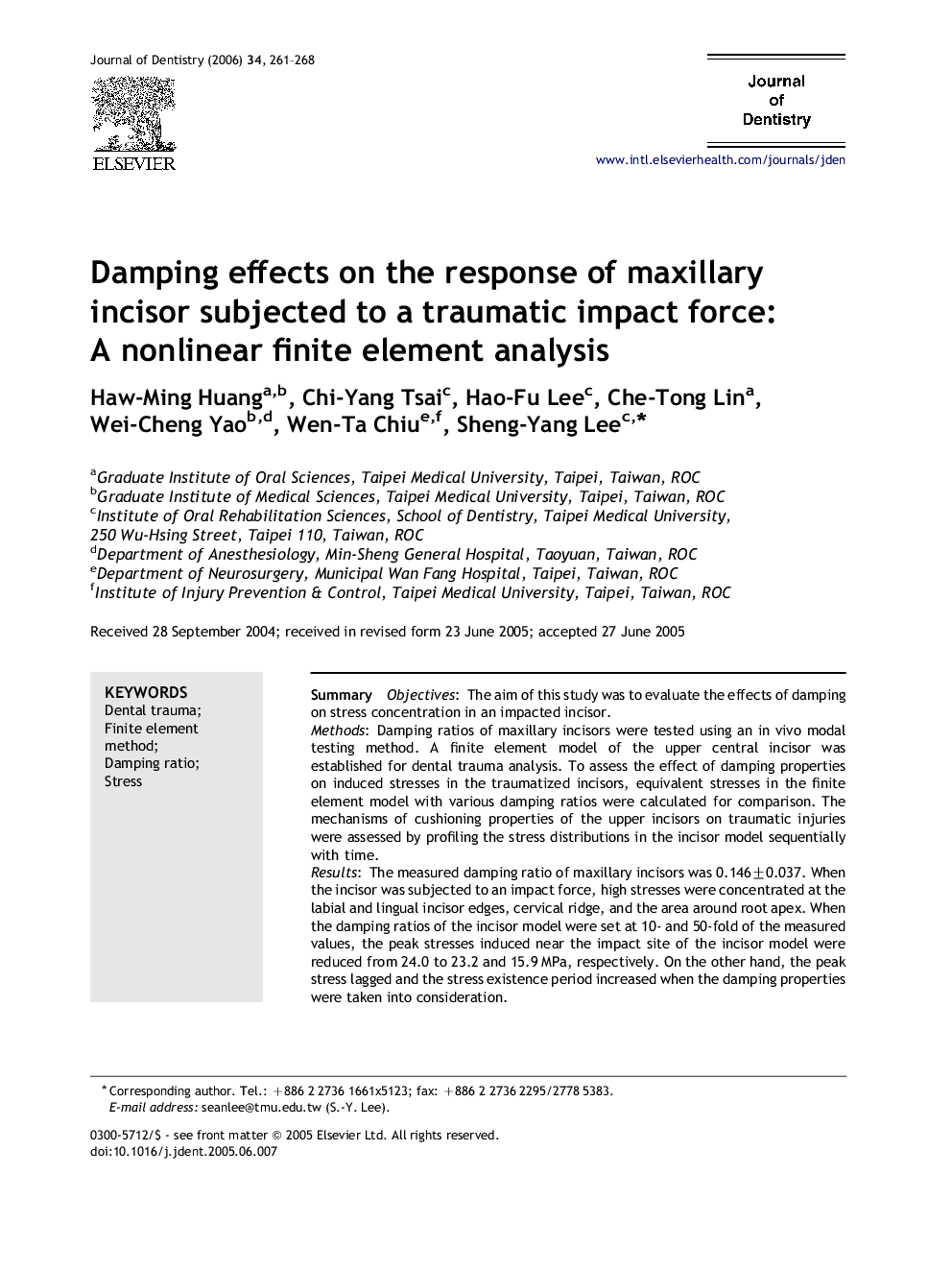| Article ID | Journal | Published Year | Pages | File Type |
|---|---|---|---|---|
| 3146251 | Journal of Dentistry | 2006 | 8 Pages |
SummaryObjectivesThe aim of this study was to evaluate the effects of damping on stress concentration in an impacted incisor.MethodsDamping ratios of maxillary incisors were tested using an in vivo modal testing method. A finite element model of the upper central incisor was established for dental trauma analysis. To assess the effect of damping properties on induced stresses in the traumatized incisors, equivalent stresses in the finite element model with various damping ratios were calculated for comparison. The mechanisms of cushioning properties of the upper incisors on traumatic injuries were assessed by profiling the stress distributions in the incisor model sequentially with time.ResultsThe measured damping ratio of maxillary incisors was 0.146±0.037. When the incisor was subjected to an impact force, high stresses were concentrated at the labial and lingual incisor edges, cervical ridge, and the area around root apex. When the damping ratios of the incisor model were set at 10- and 50-fold of the measured values, the peak stresses induced near the impact site of the incisor model were reduced from 24.0 to 23.2 and 15.9 MPa, respectively. On the other hand, the peak stress lagged and the stress existence period increased when the damping properties were taken into consideration.ConclusionsDamping properties of teeth provide protection to the tooth during traumatic injury by decreasing the peak stress magnitude due to release of strain energy over a longer period.
